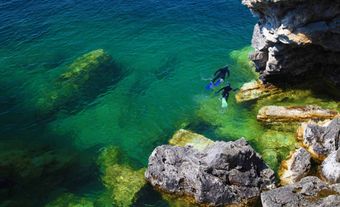Prince Patrick Island, 15 848 km2, is the farthest west of Canada's Arctic Queen Elizabeth Islands. Topographically, it is a low-elevation, dissected plateau that rises gently from an exceptionally low coast to a maximum elevation in the southeast of only 200 m. It lies within the Sverdrup Basin geological structure and consists of thick beds of Upper Devonian deposits, dipping at a shallow angle to the southwest. During the Tertiary, the island was uplifted and faulting occurred. The area is still seismically active, and tectonic movement along the faults appears at surface as fissures and small scarps. A thin strip of sand and gravel deposits of nonglacial origin was laid down along the island's Arctic Ocean coastline during the early Pleistocene. The island was named for Prince Arthur William Patrick, duke of Connaught, governor general 1911-16.
-
- MLA 8TH EDITION
- Finlayson, Douglas. "Prince Patrick Island". The Canadian Encyclopedia, 08 June 2015, Historica Canada. www.thecanadianencyclopedia.ca/en/article/prince-patrick-island. Accessed 26 April 2024.
- Copy
-
- APA 6TH EDITION
- Finlayson, D. (2015). Prince Patrick Island. In The Canadian Encyclopedia. Retrieved from https://www.thecanadianencyclopedia.ca/en/article/prince-patrick-island
- Copy
-
- CHICAGO 17TH EDITION
- Finlayson, Douglas. "Prince Patrick Island." The Canadian Encyclopedia. Historica Canada. Article published February 07, 2006; Last Edited June 08, 2015.
- Copy
-
- TURABIAN 8TH EDITION
- The Canadian Encyclopedia, s.v. "Prince Patrick Island," by Douglas Finlayson, Accessed April 26, 2024, https://www.thecanadianencyclopedia.ca/en/article/prince-patrick-island
- Copy
Thank you for your submission
Our team will be reviewing your submission
and get back to you with any further questions.
Thanks for contributing to The Canadian Encyclopedia.
CloseArticle
Prince Patrick Island
Article by Douglas Finlayson
Published Online February 7, 2006
Last Edited June 8, 2015
Prince Patrick Island, 15 848 km2, is the farthest west of Canada's Arctic Queen Elizabeth Islands.

 Share on Facebook
Share on Facebook Share on X
Share on X Share by Email
Share by Email Share on Google Classroom
Share on Google Classroom

